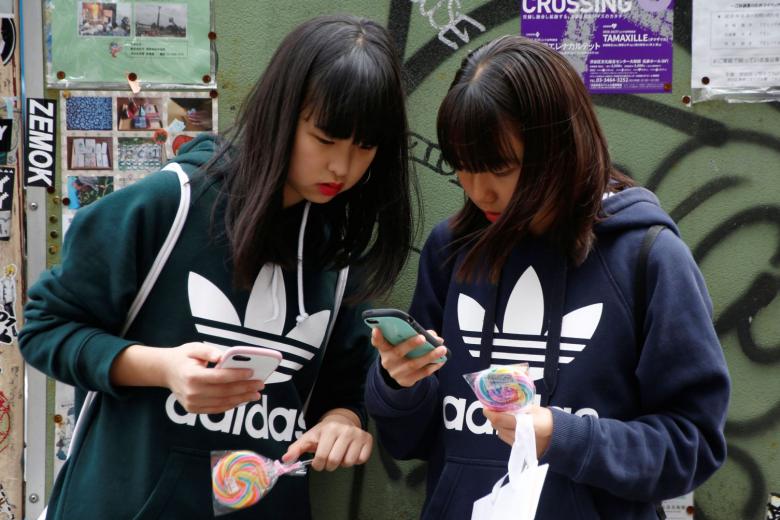TOKYO - Premium eyedrops are seeing brisk sales in Japan with more young people suffering from eye fatigue, a result of excessive use of electronic devices.
The eyedrops are in demand for alleviating blurry near-field vision, a common symptom of eye strain.
While blurry vision is prevalent among elderly people due to ageing, it is now affecting more young people, as they spend more time looking at their smartphone, the Nikkei Asian Review reported.
In a survey last year (2017), 49 per cent of 225 nurses working in elementary, junior high and senior high schools said that the number of students with smartphone-induced ageing eyesight was on the rise. The survey was conducted by personal-care and medical product maker Johnson & Johnson between July and August.
The profile of those who buy premium eyedrops has also changed, said drugstore chains in Japan.
One such chain, Tomod's, said that people who wear contact lenses and those suffering from hay fever used to be the biggest buyers of higher-priced eyedrops. These days, more working executives in the 30s to 50s are buying them.
Tomod's overall eyedrops sales in December last year grew 5.7 per cent in value terms from the same month in 2016.
Across Japan, the eyedrops market last year was worth about 57.6 billion yen (S$712 million), an increase of 7 per cent from 2016, and 44 per cent higher than in 2012, said the Nikkei Asian Review, quoting Tokyo-based market research company Fuji Keizai.
In the premium eyedrops segment, there is greater product range and more people are buying them.
At Tomod's drugstore chain, sales of eyedrops priced at 1,000 yen (S$12) or higher rose 60 per cent in December last year from the same month in 2014, reported the Nikkei Asian Review.
Industry players are predicting that "smartphone-induced ageing eyes" will continue to drive sales of premium eyedrops.
The phenomenon has even prompted at least one company to come up with an eyedrop specifically for sufferers of digital eye strain. Smile Medical A, by personal-care product manufacturer Lion, retails at 1,400 yen (S$17) before tax, the Nikkei Asian Review reported.
At Tomod's drugstore chain, V Rohto Premium and Sante Medical 12 are the top selling premium eyedrops. Both were launched in 2016 and retail at around 1,500 yen (S$19).
Ten years ago, the top-selling eyedrops were in the price range of 200 yen (S$2) to 500 yen. There were only a few brands priced around 1,000 yen, according to the Nikkei Asian Review.

